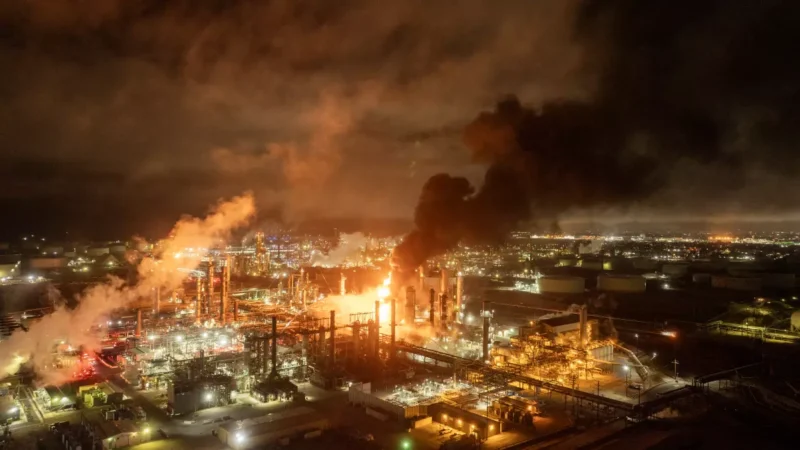
By Tony Briscoe and Connor Sheets
Oct. 4, 2025 2:54 PM PT
“The explosion and hours-long fire at Chevron’s refinery Thursday night in El Segundo deeply unnerved communities in the South Bay.
The blast sent shock waves throughout the refinery grounds, allegedly injuring at least one worker, and jolting residents as far as a mile away. A 100-foot-tall pillar of fire cast an orange glow over the night sky. And towering plumes of smoke and acrid odors drifted eastward with the onshore winds…”
“…So far, the air district has said the fire originated in the refinery’s ISOMAX hydocracking unit, which uses hydrogen to refine oil into jet fuel and diesel. The refinery’s air monitors detected a spike in airborne chemicals after the fire broke out, but air district officials say conditions returned to normal levels after a few hours.
Environmental advocates say the extent of the fallout may not be known until there is a larger examination of air quality monitors.
“I was very surprised that the air district reported they weren’t seeing terribly high levels of pollution,” said Julia May, senior scientist for California-based nonprofit Communities for a Better Environment. “Sometimes in a big refinery fire like this, it goes straight up. But then the smoke comes down in other areas. And that’s a lot of pollution that’s going someplace…”
“…For some environmentalists, the Chevron refinery fire has underscored why it’s necessary to transition away from fossil fuels altogether.
“They [the refineries] have great workers and great fire departments to respond, but this is an inherently dangerous operation that handles hundreds of thousands of barrels per day of flammable explosive materials under high temperature and high pressure,” said May, the senior scientist for Communities for a Better Environment.
“When something goes wrong, you can have a runaway fire. They did a great job at getting it under control. But do we really want antiquated dirty energy in our communities?”
